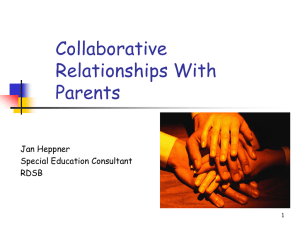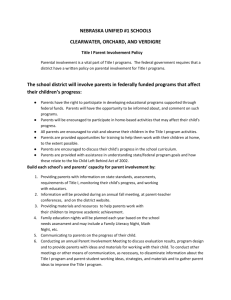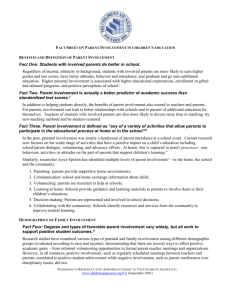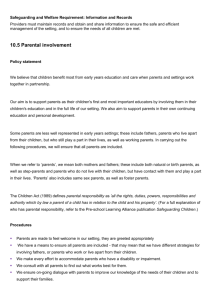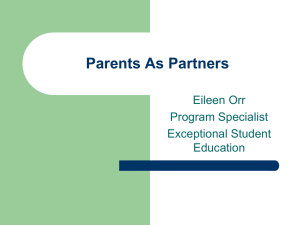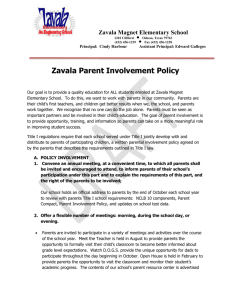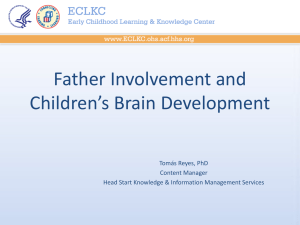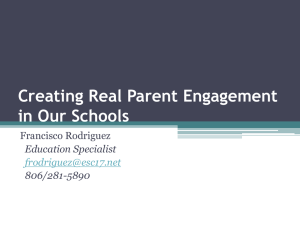12 Activities to Involve Families
advertisement
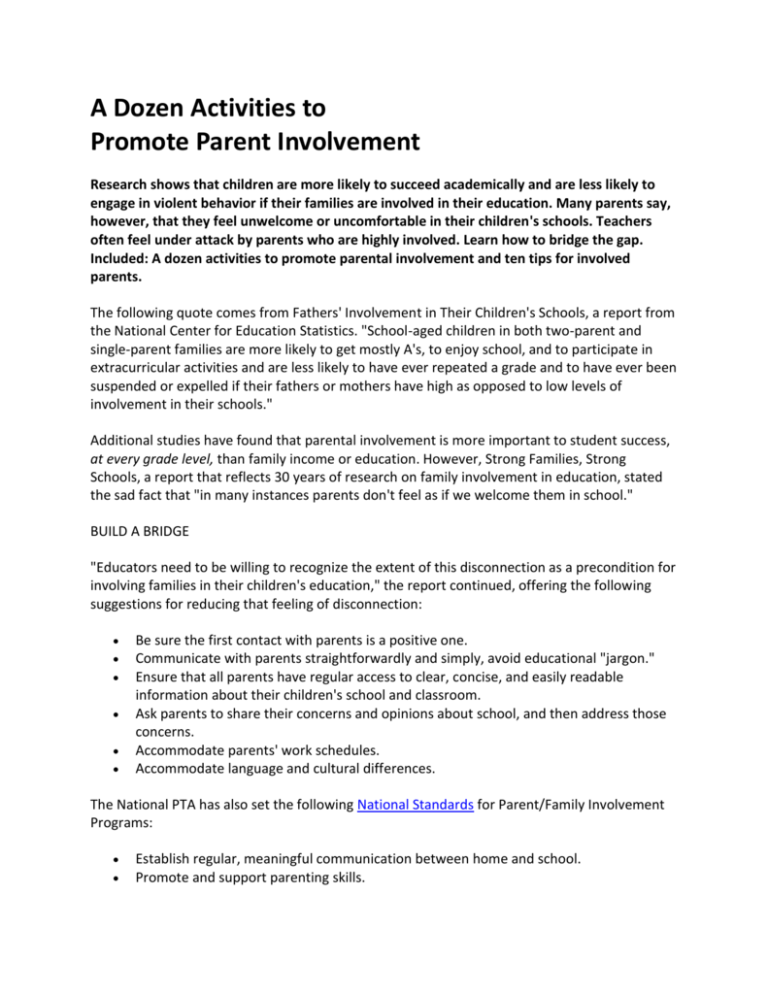
A Dozen Activities to Promote Parent Involvement Research shows that children are more likely to succeed academically and are less likely to engage in violent behavior if their families are involved in their education. Many parents say, however, that they feel unwelcome or uncomfortable in their children's schools. Teachers often feel under attack by parents who are highly involved. Learn how to bridge the gap. Included: A dozen activities to promote parental involvement and ten tips for involved parents. The following quote comes from Fathers' Involvement in Their Children's Schools, a report from the National Center for Education Statistics. "School-aged children in both two-parent and single-parent families are more likely to get mostly A's, to enjoy school, and to participate in extracurricular activities and are less likely to have ever repeated a grade and to have ever been suspended or expelled if their fathers or mothers have high as opposed to low levels of involvement in their schools." Additional studies have found that parental involvement is more important to student success, at every grade level, than family income or education. However, Strong Families, Strong Schools, a report that reflects 30 years of research on family involvement in education, stated the sad fact that "in many instances parents don't feel as if we welcome them in school." BUILD A BRIDGE "Educators need to be willing to recognize the extent of this disconnection as a precondition for involving families in their children's education," the report continued, offering the following suggestions for reducing that feeling of disconnection: Be sure the first contact with parents is a positive one. Communicate with parents straightforwardly and simply, avoid educational "jargon." Ensure that all parents have regular access to clear, concise, and easily readable information about their children's school and classroom. Ask parents to share their concerns and opinions about school, and then address those concerns. Accommodate parents' work schedules. Accommodate language and cultural differences. The National PTA has also set the following National Standards for Parent/Family Involvement Programs: Establish regular, meaningful communication between home and school. Promote and support parenting skills. Encourage active parent participation in student learning. Welcome parents as volunteer partners in schools. Invite parents to act as full partners in making school decisions that affect children and families. Reach out to the community for resources to strengthen schools. The activities below will help you meet those standards by letting parents know they are welcome in school and by helping them find ways to contribute to their children's education both in and out of school. PUT OUT THE WELCOME MAT 1. Create a school climate and structures that support family involvement. 2. Provide families with a list of required mastery skills for each subject taught at your grade level. 3. Invite families to share hopes for and concerns about children and then work together to set student goals. 4. Print and send home: In September: As a Parent, I Promise In October: Coping With High-Stakes Tests In November: How to Make Parent-Teacher Conferences Work for Your Child In December: Help Your Student Get the Most Out of Homework In January: A Grade By Grade Guide to What Your Child Should Be Learning in School. In February: Parent Involvement = Student Success In March: Education World's Tips for Involved Parents In April: 10 Tips for a Successful Parent-Teacher Conference In May: 8 Ways Parents Can Promote Reading at Home 5. Initiate a classroom volunteer program. 6. Create a parent resource center. Provide materials on issues of concern to parents, such as child development, health and safety, drug education, special education, and so on. Include information about local parenting and social services agencies. If possible, provide sample textbooks, extension activities, software, and audio and videotapes. 7. Create a classroom Web site and include a parent page. (See some advice from teachers who have built their own Web pages.) 8. Set up a homework hot line students or parents can call to get forgotten or missed assignments. 9. Invite parents to present talks and/or demonstrations about their specialized knowledge or skills. 10. Following conference or report card time, offer workshops on improving grades and study skills. 11. Maintain regular communication by sending home Weekly folders of student work. Monthly calendars of special events to be celebrated or taught. A regular class newsletter. Weekly work sheets containing activities students and families can do together. 12. Compile a wish list that includes both goods -- from craft sticks to carpet squares to software -- and services -- from stapling newsletters to chaperoning field trips to coordinating special events -- that parents might provide. Be sure the list includes many free or inexpensive items and activities that do not demand a great deal of time or a long-term commitment. ADDITIONAL RESOURCES Project Appleseed This non-profit, national campaign advocates improvement in public schools by increasing parental involvement in U.S. schools. The National PTA This site provides a number of documents offering ideas for teachers and schools who want to encourage and promote parental involvement in education. National Network of Partnership Schools Established by researchers at Johns Hopkins University, this organization helps schools, districts, and states develop and maintain programs that promote school-familycommunity partnerships. Article by Linda Starr Education World® Copyright © Education World

